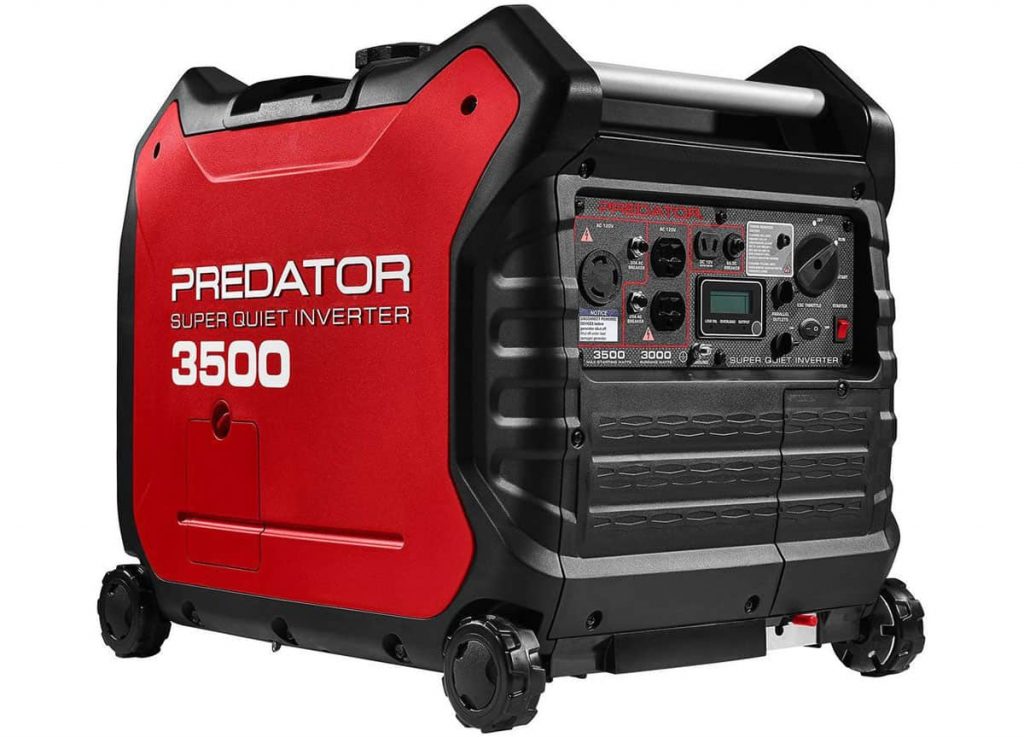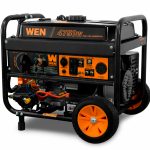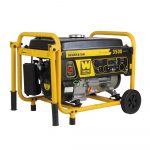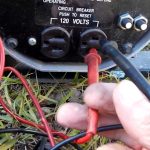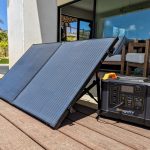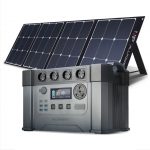Total Harmonic Distortion (THD) is an important metric when evaluating the performance of a generator. In general, the lower the THD, the better the generator performance. Predator generators typically have a THD level of 10-15%. This is considered to be acceptable. In order to achieve this level of THD, the generator must have a well-designed power system, utilising advanced components and technologies.
This includes the use of higher-quality windings, a well-designed neutral system, and harmonic filters. For most applications, an acceptable THD level is between 5-10%. Anything higher than this can cause significant issues, such as increased voltage drop, increased power losses, and inefficient operation, that can result in expensive repairs and downtime. When purchasing a generator, it is important to check the manufacturer’s specifications to ensure the THD level is acceptable. Buyers should also request lab test results to verify the THD level is within the acceptable range. In conclusion, when purchasing a generator, it is important to check the THD level and make sure it is within the accepted range of 5-10%. This will ensure that the generator operates efficiently, with minimal power losses and no unexpected repairs or downtime.
What is a good number for total harmonic distortion?
A good number for total harmonic distortion (THD) when it comes to a Predator generator is any number lower than 5%. THD is an indication of the amount of distortion of the waveform of an electrical signal and is measured in percentage. A higher percentage of THD means more distortion, and the lower the percentage, the better the quality of power generated by the Predator generator. THD is measured by comparing the sum of the powers of all the harmonic components to the power of the fundamental frequency, and then expressing it as a percentage of the fundamental frequency. A Predator generator is expected to have a very low THD, as low as 0.3 to 1%, allowing it to generate a high quality of power.
When it comes to choosing a Predator generator, it is important to pay attention to the THD number. The lower the THD, the better the quality of power generated. A good number for total harmonic distortion in the context of a Predator generator is any number lower than 5%. This will ensure that the power generated is of a high quality.
What is a good total harmonic distortion?
A predator generator’s total harmonic distortion (THD) is a measure of the amount of distortion that exists in the output of the generator. A good total harmonic distortion should be as close to zero as possible, as any distortion will create an uneven signal that can lead to damage or inefficiency of the generator. The THD for a predator generator is determined by the amount of non-linearity present in the generator’s output. If the output is linear, then THD will be low. However, if the output is non-linear, then THD will be higher.
Lower THD values result in higher quality output, as they reduce the amount of distortion that can be caused by harmonics. Harmonics are generated when a signal is subject to non-linearity, resulting in an often unwanted, distorted signal. The THD of a predator generator can be improved by ensuring that the generator is well-maintained and in good working order. Regular maintenance and checks can help to ensure that the generator remains in good condition and produces outputs with low total harmonic distortion. It is important to monitor the THD of a predator generator, as higher levels of THD may indicate a need for maintenance or repair. High THD levels can also lead to lower efficiency in the operation of the generator, as well as potentially damaging the generator if left unchecked.
What causes harmonic distortion in a generator?
Harmonic distortion in a generator is caused by the transfer of energy to the electrical system, resulting in a higher frequency than the power source. This is especially evident when using a Predator generator. The Total Harmonic Distortion (THD) is used to measure this harmonic distortion in the generated power. Depending on the type of equipment used, the THD of a Predator generator can range from 5% to 10%. The main causes of harmonic distortion in a generator are non-linear loads, transformer saturation, and system resonance.
Non-linear loads draw more current at higher frequencies, while transformer saturation occurs when the voltage output is too high. System resonance is caused by the coupling of two or more oscillators in the system, resulting in a higher frequency than expected. High harmonic distortion can cause serious issues in the electrical system, such as overheating components, voltage instability, and power quality problems. It is important to avoid harmonic distortion in order to maintain a reliable and safe electrical system. The THD of a Predator generator is typically lower than the THD of other generators, making it a good choice for avoiding harmonic distortion. Moreover, Predator generators are designed to minimize voltage distortion, making them ideal for applications that require clean and reliable power. By following the safety instructions, using the correct equipment, and regularly maintaining the generator, it is possible to reduce the amount of harmonic distortion and ensure reliable power quality.
Are predator generators pure sine wave?
One important factor to consider when using a Predator generator is the total harmonic distortion (THD). THD is a measure of how much distortion is present in a Predator generator’s output voltage. The lower the THD, the cleaner the output voltage. Predator generators that are pure sine wave are considered to have a low THD, as they will produce a clean output voltage with minimal distortion. Pure sine wave generators are capable of producing a power output that is virtually identical to the power produced by the utility grid.
This means that when using a pure sine wave generator, you can expect a consistent and reliable power output that is free from harmonic distortion and spikes. Pure sine wave generators also produce a cleaner output voltage, which can help reduce the overall power consumption in the area where the generator is being used. This can result in lower electricity bills and improved performance from electronically-sensitive appliances, such as computers or audio/video equipment. Overall, Predator generators that are pure sine wave are a great choice for those who want a reliable and consistent power output, free from distortion. They are also more energy-efficient than other types of generators, so they can help reduce electricity bills.
Who is predator generators made by?
This generator is designed for industrial use, and is ideal for powering larger businesses. It is a reliable and robust unit, and is suitable for a variety of applications. The Predator Generator THD is powered by a reliable Pramac engine, and has a range of features designed to make it easy to use. It is capable of generating a maximum power output of up to 10.5kW, and has a range of protection systems built in to ensure that it runs safely and efficiently. The Predator Generator THD has a digital LCD display, enabling users to see the status of their generator quickly and easily.
It also has an auto-start function, which means that it will automatically start if there is a power outage. It has a low noise output, making it suitable for use in areas where noise levels need to be kept low. The Predator Generator THD is a reliable and robust unit, and is designed for industrial use. It is easy to use and maintain, and is capable of powering larger businesses. With its protection systems, digital LCD display, auto-start function and low noise output, it is the perfect choice for industrial applications.
Can predator generators go in rain?
When it comes to rain, one of the main questions people have is whether or not predator generators can go in the rain. The answer is yes, they can. Predator generators THD are designed to be water-resistant and are designed to withstand wet weather conditions. The generator must be properly sealed and installed to ensure that it is protected from the elements. It is important to ensure that the generator is in a sheltered area and is properly covered with a tarp to ensure that no water can enter the generator.
It is also important to make sure that the generator is regularly maintained to ensure that it is always working correctly. Proper maintenance includes checking the spark plug regularly, changing the oil and spark plug, and replacing any worn or damaged parts. Overall, predator generators THD are designed to be durable and efficient, and can be safely used in wet conditions. Proper maintenance and installation, however, is essential to ensure that the generator is always operating correctly and is protected from the elements.
Is generator THD important?
Predator generators are known for their high-quality power and advanced technology. The fact that they come with a True Harmonic Distortion (THD) generator is an important feature. THD is a measure of the distortion present in the output of an electrical device. When the THD is high, it indicates that the power generated by the device is not of good quality. A Predator generator with a low THD rating will provide much cleaner power than one with a higher rating.
This is especially important if the power is being used for sensitive equipment. Low THD power is also much quieter than higher THD power. The THD generator in a Predator generator is used to produce a waveform that is free of harmonics, which are distortion components in the audio system. This helps to ensure that the power generated by the Predator generator is of high quality. It is important to remember that a Predator generator with a low THD rating is not necessarily better than one with a higher rating. The goal should be to find the right THD rating that meets the needs of the application. For example, if the generator will be used to power sensitive equipment, then a lower THD rating is preferable. In conclusion, the True Harmonic Distortion (THD) generator in a Predator generator is an important feature. It helps to ensure that the power generated is of high quality and free from distortion. Therefore, it is important to consider the THD rating of a Predator generator before making a purchase.
What is a good THD for a portable generator?
A good THD for a portable generator is usually less than five percent. Lower THD values generally mean that the generator is producing less harmonic distortion in its output power, resulting in a cleaner and more reliable supply of electricity. A good THD can also help to minimize the potential damage to other equipment connected to the generator. A Predator generator with a good THD can provide users with a much more reliable and efficient power source. Furthermore, these generators can help to reduce environmental pollution caused by harmonic distortion in the power supply.
How much THD is acceptable in a generator?
When used for industrial applications, the Predator Generator must have a specific level of Total Harmonic Distortion (THD) to meet certain standards. THD is the amount of distortion in the electrical output of the generator. The acceptable THD level for a Predator Generator depends on the type of application it will be used for. Generally, a THD level lower than 5% is acceptable for industrial applications, while a THD level lower than 3% is ideal. A THD level between 3% and 5% is usually acceptable for residential applications.
The THD level is important because it affects the quality of the generator’s output. If the THD level is too high, the generator’s output can be distorted or unreliable. This can lead to significant damage to the equipment being powered by the generator. Using high-quality parts and proper maintenance can help ensure that the Predator Generator’s THD level stays within acceptable limits. Additionally, the generator’s performance should be tested regularly to make sure it remains within the acceptable THD levels. In conclusion, the Predator Generator must have a specific Total Harmonic Distortion level depending on the type of application it will be used for. Generally, the THD level should be lower than 5% for industrial applications and lower than 3% for residential applications.
What is the THD of Generac generators?
The Predator Generator THD is specifically designed to reduce the amount of distortion that is present in the electrical system. The THD of a Generac generator is typically around 4%, meaning that the generator produces 4% harmonic distortion. This is considered to be low and is accepted by the National Electrical Code. However, it is important to note that Generac generators can have a THD of up to 10% depending on the type of generator and the load it is running. This means that Generac generators may not be suitable for certain applications that require a THD of under 10%, such as powering sensitive electronics.
What is normal THD?
Normal THD stands for Total Harmonic Distortion. It is a measure of the power output of a generator and is expressed as a percentage. It is an indication of the amount of distortion in the generator’s output waveform. In the context of a Predator Generator THD, it is the percentage of distortion in the generator’s output waveform at its highest operating level. Predator Generators are designed to be as efficient as possible, so the THD should be as low as possible.
A Predator Generator with a high THD is likely to be less efficient and will require more power to produce the same output as a generator with a lower THD. The lower the THD, the more efficient the generator. Predator Generators typically have a THD of around 2%, which is the industry standard and is considered very good. A THD of greater than 8% is considered to be poor, and the generator should be replaced if this is the case. In summary, THD is an important measure of efficiency in a Predator Generator and should be monitored to ensure that the generator is operating as efficiently as possible. The lower the THD, the more efficient the generator will be.
How much THD is acceptable for electronics?
Predator generators have a maximum allowable Total Harmonic Distortion (THD) of 5%. This value is the accepted industry standard for peak performance and reliability of the generator’s electronics. THD affects the system’s power quality, so it’s important to know how much distortion is acceptable in order to get the most out of your generator. High THD levels can cause voltage and current fluctuations, which can reduce the performance of your generator and lead to power problems. The Predator generator’s THD rating is important for ensuring efficient system operation.
It is recommended that you keep the THD below 5% to ensure peak performance and reliability. This is especially important in high-load applications such as powering motors or other heavy-duty equipment. The Predator generator is designed to handle loads up to 5% THD, which is a good balance between peak performance and optimal efficiency. With the Predator generator, you can rest assured that you are getting the most out of your generator while also keeping your electronics safe. In conclusion, the Predator generator is designed to provide maximum performance and reliability with a maximum allowable THD of 5%. Keeping your THD within this range will ensure optimal performance and safety of your generator’s electronics.
Does a UPS filter THD?
Does a UPS filter THD in the context of a predator generator? The answer is yes, it does. A UPS – or Uninterrupted Power Supply – is an electrical device that helps to regulate the quality of power supplied to a generator. A UPS helps to reduce Total Harmonic Distortion (THD) by providing a more steady and consistent power supply. THD can cause generators to experience power fluctuations, and can lead to increased noise and vibration. A UPS helps to prevent this by conditioning the power before it feeds into the generator.
This helps to ensure that the generator provides a clean, consistent power supply, without any undesirable fluctuations. A UPS can also provide protection against outages by providing an emergency backup power supply. This ensures that your generator can continue to operate even in the event of a power cut. Overall, having a UPS filter that reduces THD is an essential part of having a reliable, safe and efficient predator generator. It helps to ensure that your generator provides the best quality power supply with minimal disruption. This can save both time and money, as well as keep your generator running smoothly.
How important is THD in a generator?
Predator generators are widely used for providing power to homes, businesses, and other applications. One of the most important performance metrics for a generator is its Total Harmonic Distortion (THD). THD is the amount of distortion in the voltage waveform produced by the generator, and it affects the quality of the power provided to an electrical system. A low THD value is desirable as it indicates that the voltage waveform is cleaner and produces better power quality. Conversely, a high THD value indicates that the voltage is distorted and can cause problems such as extra heat production, excessive motor current draw, and overheating of the electrical components.
Therefore, when choosing a predator generator, it is important to look at the THD value. A low THD value indicates that the generator is of good quality and will provide reliable and safe power. A high THD value indicates that the generator may not be suitable for the application and needs to be replaced. In conclusion, THD is an important factor to consider when choosing a generator, especially when it comes to predator generators. A low THD value indicates that the generator is of good quality and will provide reliable and safe power, whereas a high THD value indicates that the generator may not be suitable for the application and needs to be replaced.
